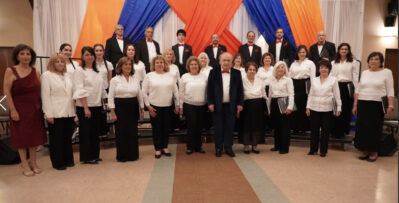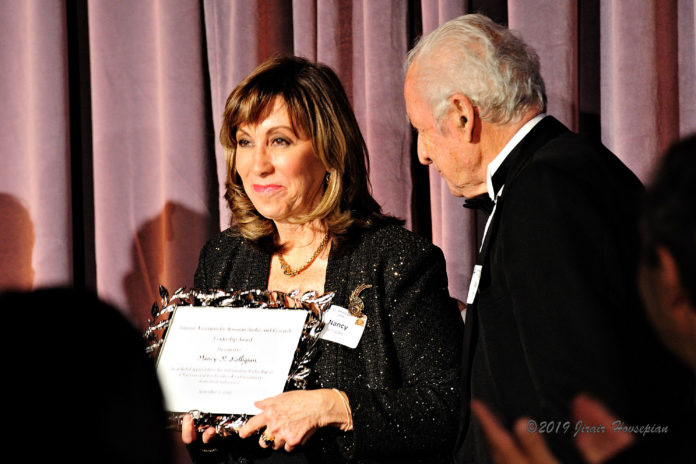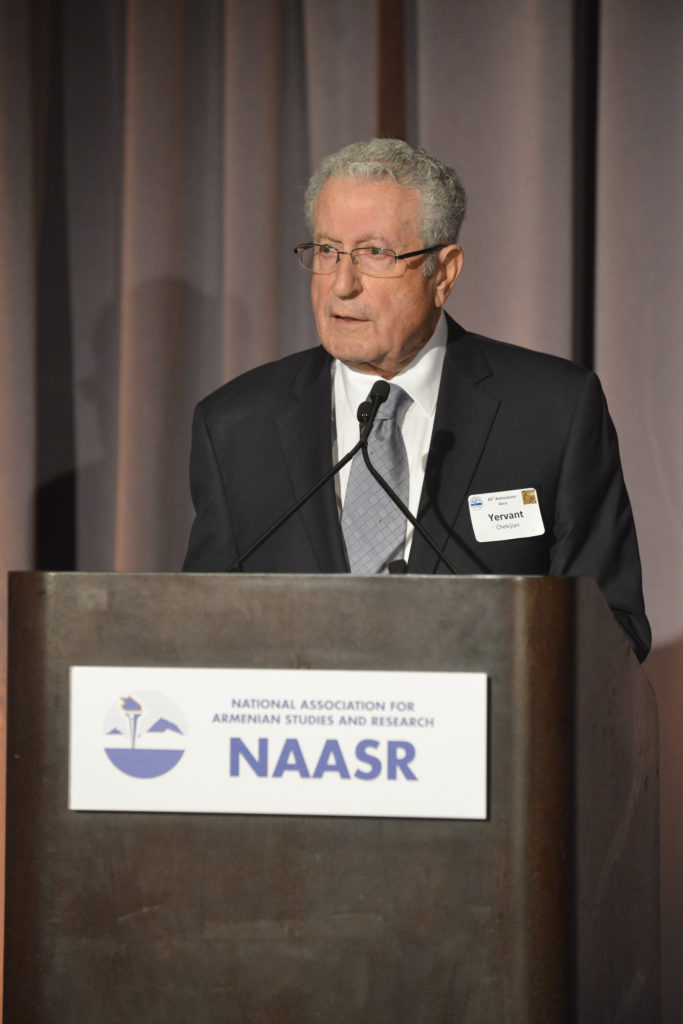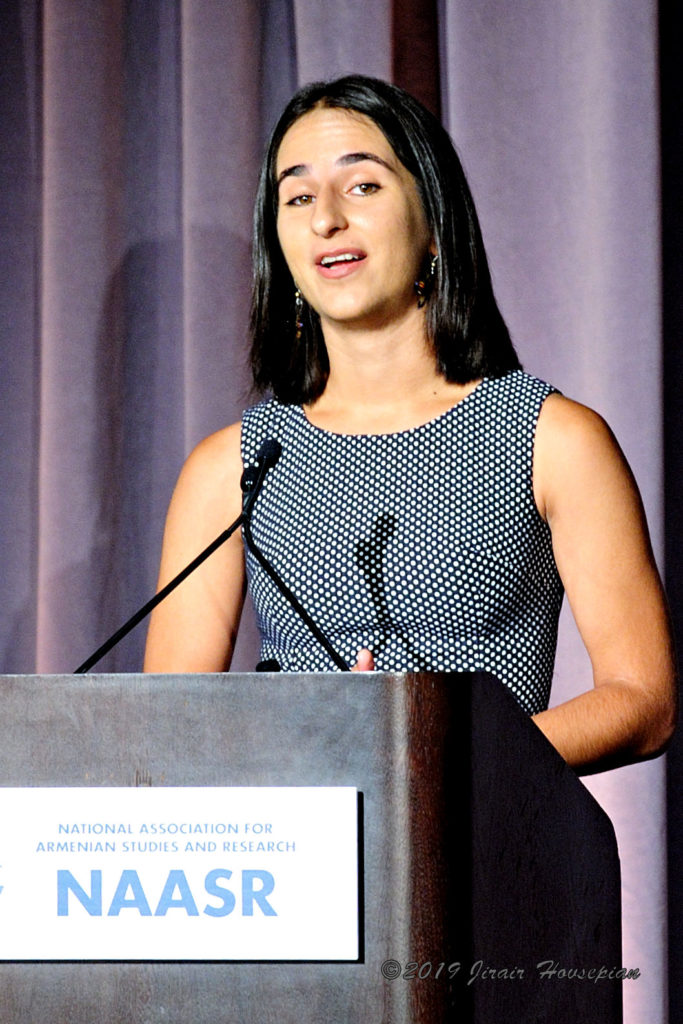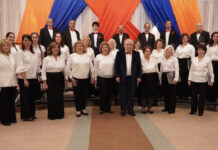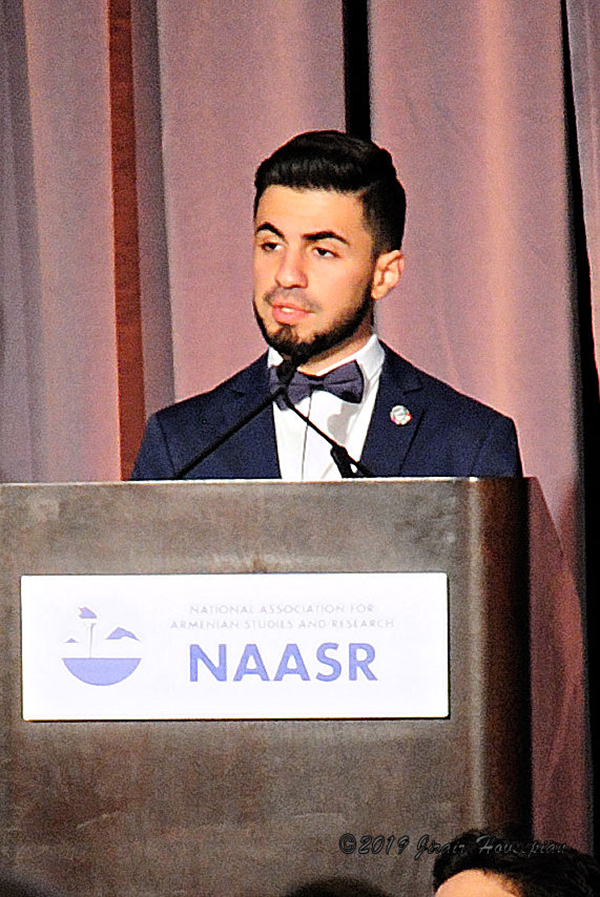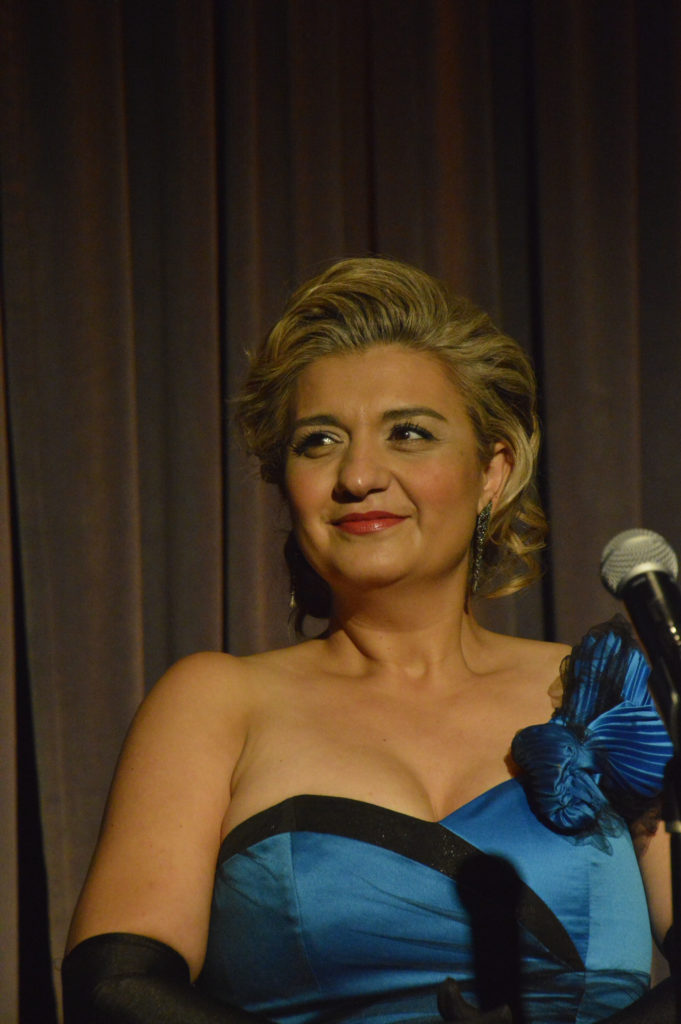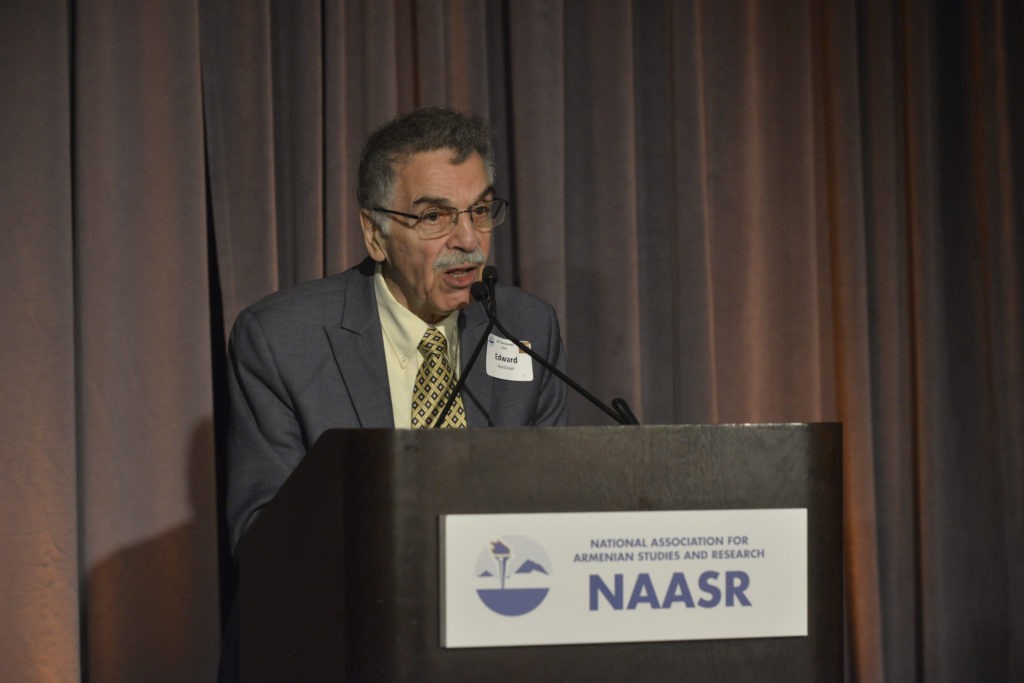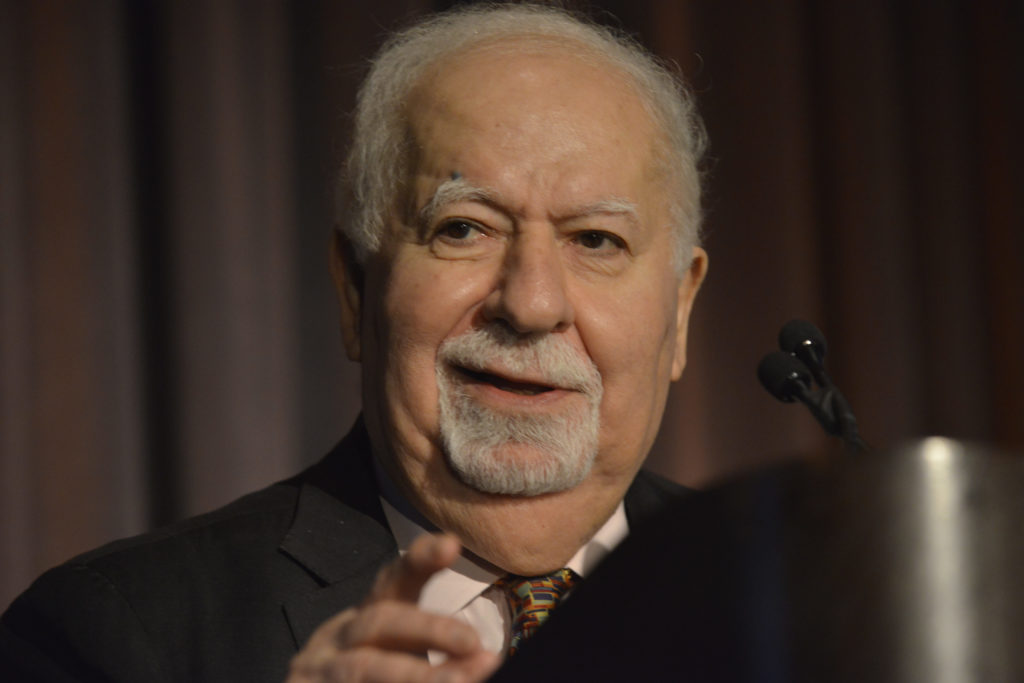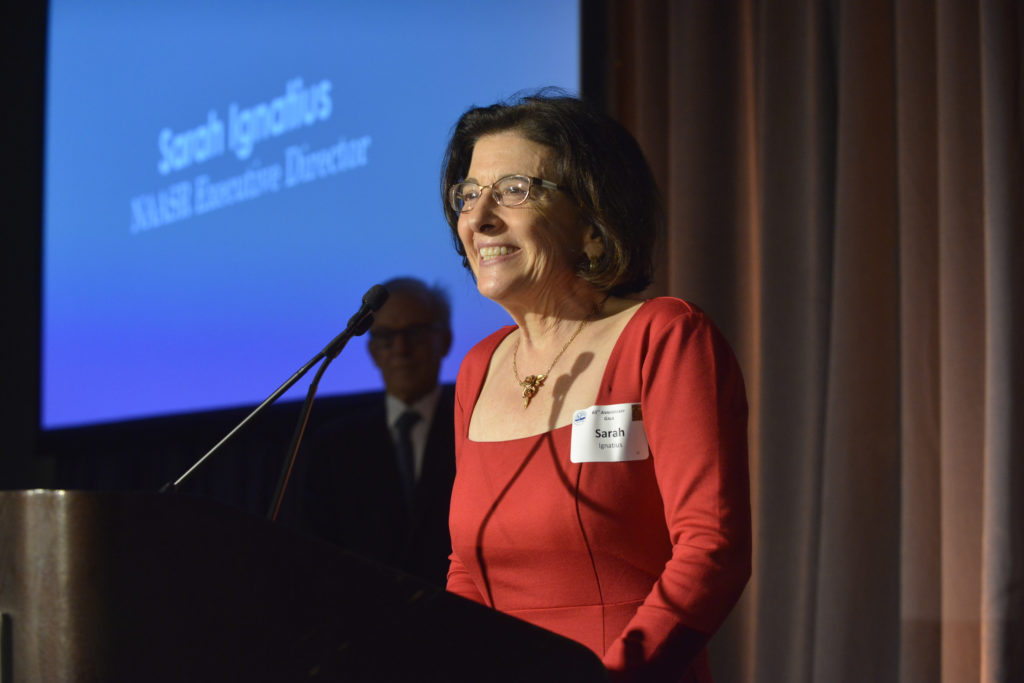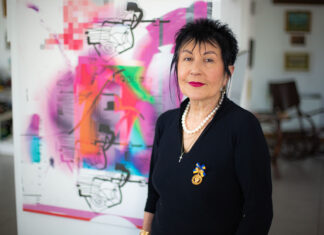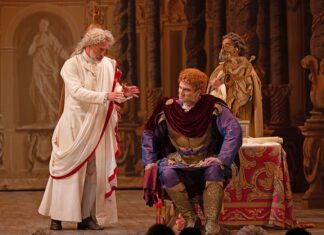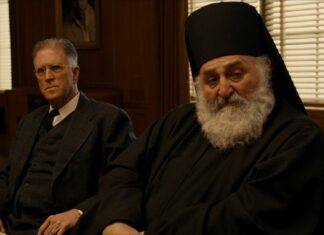CAMBRIDGE, Mass. – The atmosphere was giddy at the 65th anniversary gala of the National Association for Armenian Studies and Research (NAASR) at the Royal Sonesta Boston hotel’s Grand Ballroom. Almost five hundred guests from Boston, many other parts of the US, and beyond were celebrating the completion of NAASR’s new state-of-the-art headquarters in Belmont and looking forward to what will come next.
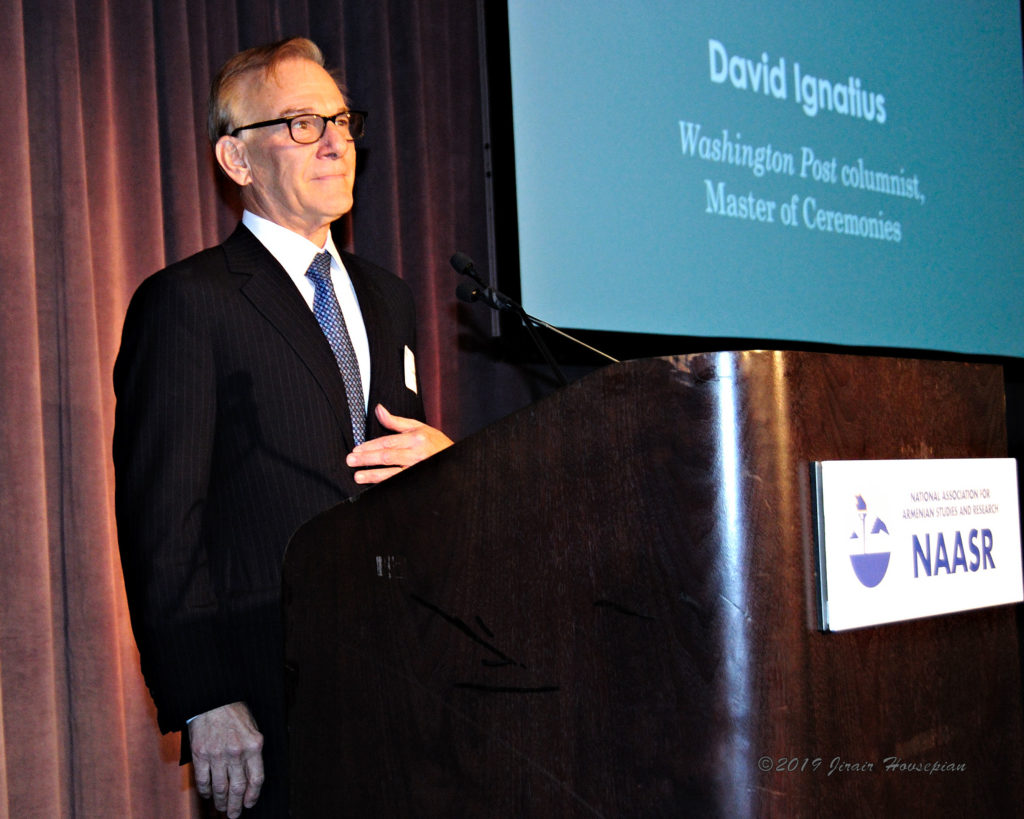
The guests, in addition to prominent philanthropists, intellectuals and longtime supporters of NAASR, included diplomats such as Armenia’s Ambassador to the US Varuzhan Nersesyan and Armenia’s UN Ambassador Mher Margaryan. Befitting the educational and cultural nature of NAASR, there was present an impressive roster of current university presidents, such as Joseph Aoun of Northeastern University, Lawrence Bacow of Harvard University, and Mary Papazian of San Jose State University, and past presidents Dr. Aram Chobanian of Boston University, Bruce Boghosian of the American University of Armenia, and Vartan Gregorian of Brown University.
David Ignatius, columnist of the Washington Post and a novelist, served as master of ceremonies and introduced himself in the context of the evening as primarily a brother and a son. A proud brother of Sarah Ignatius, NAASR executive director, he is the son of former US Navy Secretary Paul Ignatius, who was in the audience and would turn 99-years old the following week. David Ignatius noted in connection to the new NAASR headquarters, “Constructing a building is a gift from the past and present to the future.”
A series of brief videos were screened at different points in the program featuring Dr. Lisa Gulesserian, lecturer on Armenian language and culture at Harvard University, Dr. Khatchig Mouradian, at Columbia University, and Dr. Laure Astourian, assistant professor of French at Bentley University, all younger scholars speaking in appreciation of NAASR’s support of scholarship and Armenian culture.
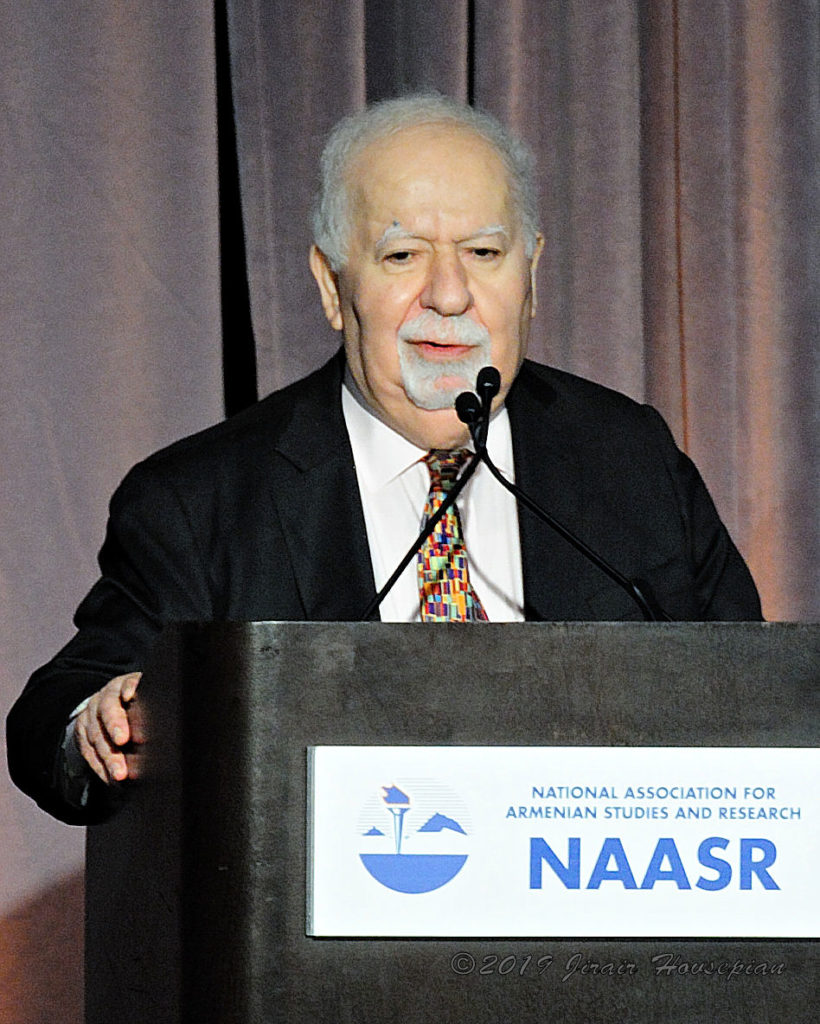
NAASR Gives Thanks
Yervant Chekijian, chairman of NAASR’s board of directors since 2016 and chair of the fundraising for the new building, expressed his gratitude to the donors, especially primary patrons Edward and Pamela Avedisian, who humbly named the building not after themselves but after Vartan Gregorian. Chekijian thanked the gala committee led by Sarah and Piligian, the NAASR board of directors, and all those involved in the project. Chekijian revealed that 6.5 million dollars has been raised for the building, with only 700,000 dollars more needed to cover its total cost.
